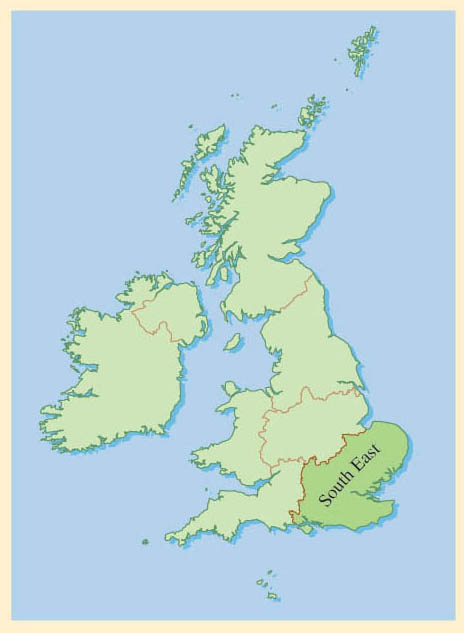5.3.5 Where should the new airport capacity be located?
While the ‘Future of Aviation’ consultation was going on and various stakeholders were coming to terms with the associated reports, the DfT also initiated seven Regional Air Service (RAS) studies, to assess the possible locations for airport capacity expansion and to evaluate the various economic, social and environmental impacts. These regional studies did not take into account the responses from national consultation, but were entirely based on the estimates of passenger numbers and on the ‘Valuing the External Costs’ approach proposed by the December 2000 documents.
One of these RAS studies was the South East and East Regional Air Service (SERAS) study which was announced in March 1999. Figure 21 shows the geographical coverage of the SERAS study. Right from the start, SERAS was considered to have a significantly greater challenge compared to the other regional studies. The South East has the largest airports in the UK, is considered to be the country’s economic powerhouse and has the highest population density. Crucially, approximately 80 per cent of UK passenger traffic has an origin or destination in the South East of England (DfT, 2002).

Any decision on airport expansion would need to consider the South East very seriously. The only other area identified for significant expansion was the West Midlands where the main options were a brand new airport between Rugby and Coventry, or expansion at Birmingham and the East Midlands airports. In the rest of the country, the Regional Air Service studies outlined a policy of making full use of existing airport capacity.
SERAS included a comprehensive scoping, evaluation and decision-making framework to deal with the difficult issues specifically related to the South East of England. The approach was based on a relatively recent development by the UK government under the umbrella of ‘multi-modal studies’. This involved an explicit analysis of the interactions between all modes of travel and between land use and transport. Investments in infrastructure, services and policy were given equal weighting and were evaluated against environmental, safety and economic impacts. The studies were undertaken by independent consultants with a wide range of skills and submitted to the relevant government body. As this methodology was developed for land surface travel, the Regional Air Service studies had to develop their own particular approach.
